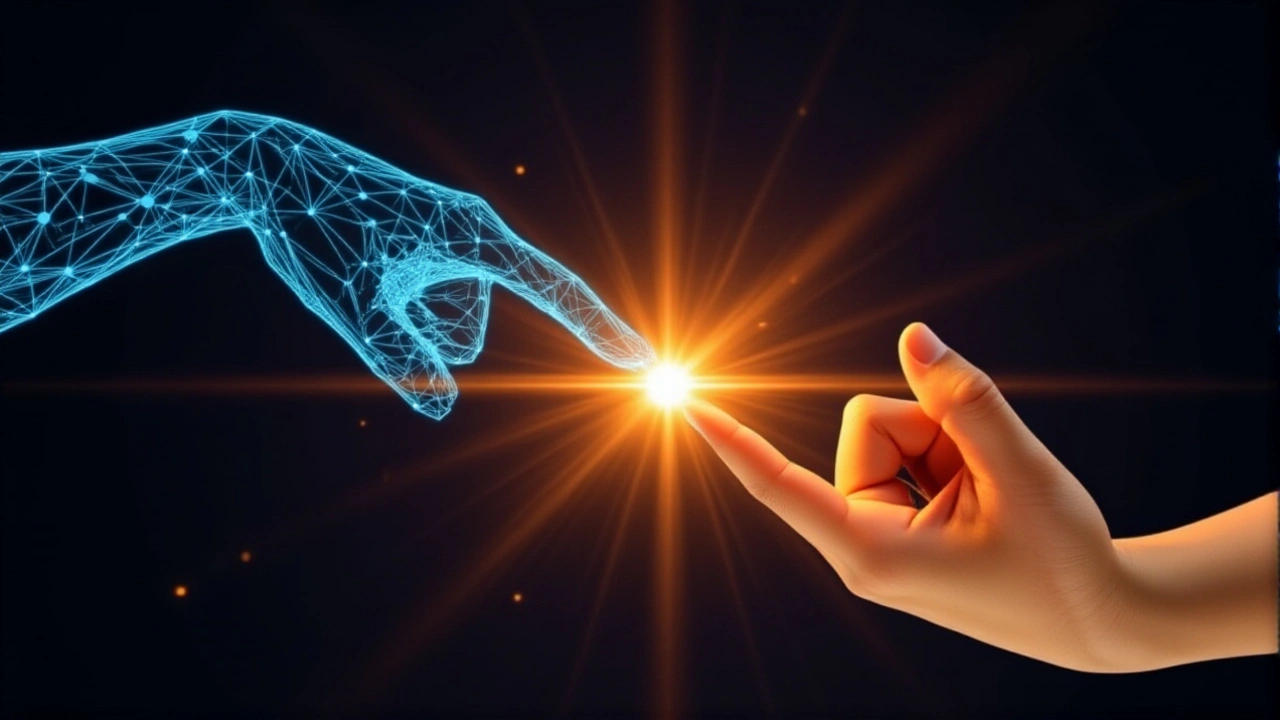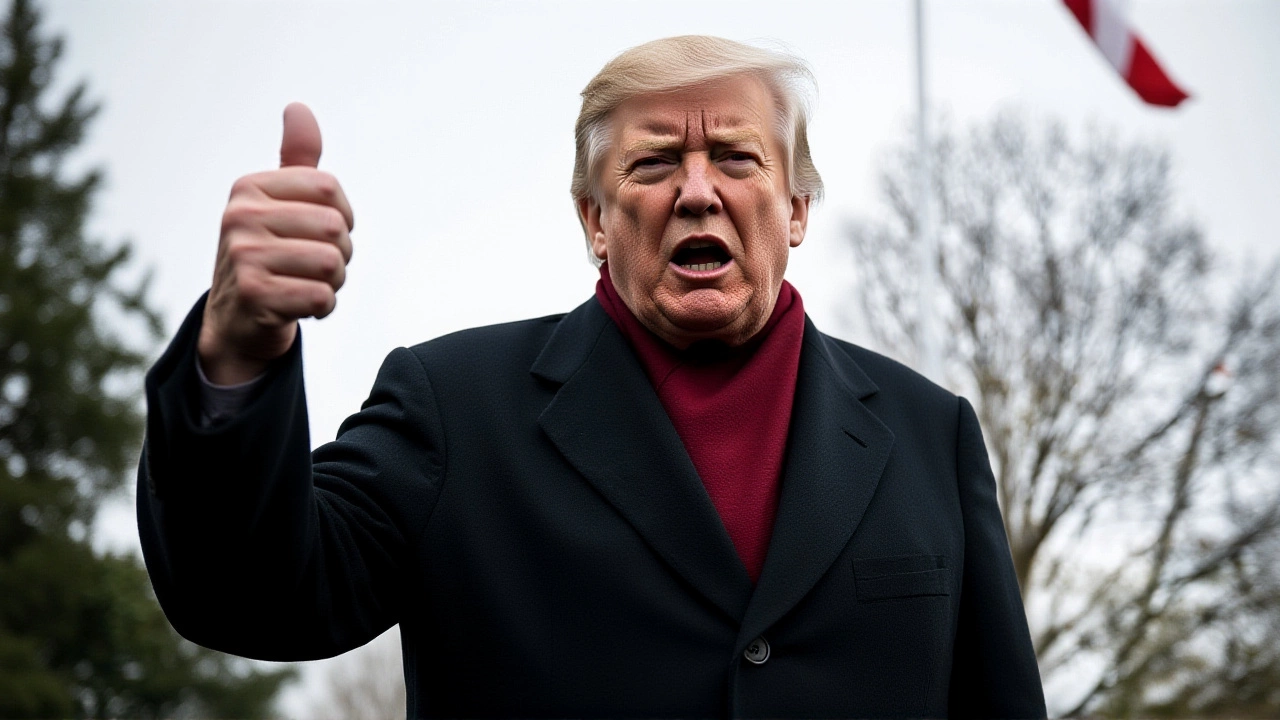AI, CRISPR, and Solar Power Collide in 2025—The World as We Know It Ends
 Nov, 24 2025
Nov, 24 2025
The world isn’t just changing—it’s being rewired. By mid-2025, Futura Sciences reports that artificial intelligence, CRISPR-Cas9 gene editing, and solar power have converged into a single, unstoppable force, dismantling old economic and ecological structures faster than governments can respond. What began as separate scientific breakthroughs—CRISPR-Cas9 in 2012, solar cost declines accelerating after 2015, and AI’s leap from lab to life in 2020—is now a triple wave crashing over every sector, from healthcare to energy grids. This isn’t evolution. It’s revolution.
The Energy Collapse: Solar Power Surpasses Coal
In 2015, solar panels cost $0.65 per watt. By 2025, that number dropped to $0.12, thanks largely to manufacturing dominance by Chinese firms like LONGi Green Energy and JinkoSolar. The result? Solar is now cheaper than coal in 92 countries, according to the International Energy Agency. In Germany, wind and solar generated 58% of electricity in Q1 2025—up from 41% just two years prior. In Texas, solar farms now supply over 25% of peak demand, outpacing natural gas for the first time. Grid operators no longer ask if renewables can scale—they’re scrambling to upgrade infrastructure to handle the flood. Extentia’s 2025 report notes that smart grids and lithium-sulfur batteries, now in pilot phase across 17 nations, are reducing transmission losses by up to 30%. Fossil fuel plants? Many are being repurposed into data centers. Others are just… shut down.CRISPR Moves from Lab to Living Room
Back in 2020, CRISPR was a buzzword in biology journals. By 2025, it’s in clinics. The CRISPR-Cas9 system, once a tool for editing single genes in petri dishes, now treats sickle cell disease in over 12,000 patients globally—many in low-income nations through partnerships with CRISPR Therapeutics and the Gates Foundation. In agriculture, drought-resistant wheat developed by Bayer CropScience is being planted across sub-Saharan Africa, boosting yields by 40% without pesticides. Even more startling: scientists at the Broad Institute used CRISPR to engineer a strain of algae that absorbs 50% more CO₂ than natural variants—now being tested in offshore carbon farms off the coast of Norway. The ethical debates haven’t vanished. But the question has shifted: not whether we *can* edit genes, but whether we can afford not to.
AI: The Invisible Infrastructure
You don’t see AI. But it sees you. In hospitals, IBM Watson Health now analyzes 3.2 million patient records daily, cross-referencing genetic data with drug trials to recommend personalized cancer therapies with 92% accuracy—up from 68% in 2022. In classrooms from Nairobi to Nashville, AI tutors adapt lessons in real time, closing learning gaps for students who fell behind during the pandemic. Finance? Algorithmic trading now controls 78% of daily equity volume—not because humans want it that way, but because the speed and precision are unmatched. And here’s the twist: AI isn’t just making decisions. It’s *predicting* them. In 2024, an AI model developed by DeepMind forecasted a 17% spike in solar panel demand in Brazil three months before the market responded. That’s not forecasting. That’s foresight.The Human Cost of Progress
Not everyone’s cheering. In West Virginia, coal miners lost 11,000 jobs between 2023 and 2025. In India, small solar installers are being crushed by Chinese imports. And in the EU, a 2025 parliamentary hearing revealed that 63% of citizens fear genetic editing will deepen inequality—only the wealthy can afford CRISPR enhancements. The World Economic Forum warned that global supply chains are now more vulnerable than ever: 87% of high-purity silicon for solar panels comes from Xinjiang; 90% of CRISPR reagents are produced by three U.S. and German firms. When one factory shuts down, entire continents stall. The transition isn’t just technological. It’s political. It’s psychological. It’s personal.
What Comes Next? The Race for Governance
Governments are playing catch-up. The U.S. passed the 2025 Tech Transition Act in March, allocating $4.7 billion to retrain workers displaced by automation and renewables. The EU unveiled its first global CRISPR ethics charter in May, banning human germline edits but allowing therapeutic uses under strict oversight. China, meanwhile, quietly launched its “Bio-Solar Grid Initiative,” integrating AI-managed solar farms with CRISPR-enhanced algae carbon capture in 12 provinces. The real battle isn’t between nations—it’s between speed and control. Can we regulate this without stifling it? Can we distribute benefits without inviting chaos? The answer will define the next decade. As Futura Sciences put it: “Instead of simply enduring this transition, we can understand it, anticipate it, and turn it into a powerful force.”Frequently Asked Questions
How is CRISPR being used to fight climate change?
Scientists have engineered CRISPR-modified algae and cyanobacteria that absorb up to 50% more CO₂ than natural strains. These are now being deployed in offshore carbon farms in Norway and Chile, where they’re grown in controlled marine environments and harvested for biofuel or carbon sequestration. Early trials show one square kilometer of these farms can capture as much CO₂ as 20,000 trees annually.
Why is solar power cheaper than coal now?
Between 2015 and 2025, the cost of solar panels fell from $0.65 to $0.12 per watt due to mass production in China, improved silicon efficiency, and automated manufacturing. At the same time, coal’s costs rose—due to stricter emissions regulations, transport expenses, and aging infrastructure. In 2025, the levelized cost of solar is $32 per MWh versus $58 for coal, making it the cheapest source of electricity in most of the world.
What happens to workers who lose jobs to AI and automation?
The U.S. and EU have launched retraining programs targeting displaced workers—coal miners, factory technicians, fossil fuel engineers—with certifications in solar installation, battery maintenance, and AI system oversight. Germany’s “Energy Transition Academy” has already placed 8,200 former coal workers in new roles by mid-2025. But in developing nations, support is scarce, creating growing economic divides.
Are there any real-world examples of AI predicting energy demand?
Yes. In 2024, DeepMind’s AI analyzed weather patterns, holiday schedules, and electric vehicle charging trends to predict a 17% surge in solar demand in Brazil three months ahead of time. Utilities used that data to pre-allocate grid capacity, avoiding blackouts and saving $210 million in emergency fuel costs. Similar models now run in California, South Africa, and India.
Could CRISPR create a new form of inequality?
Absolutely. While CRISPR therapies for sickle cell and blindness are now covered by insurance in the U.S. and EU, they cost $2 million per patient—far beyond reach in most countries. Wealthy individuals are already exploring non-therapeutic edits—enhanced muscle growth, cognitive resilience—raising fears of a genetic elite. The UN is drafting a global treaty to ban commercial gene enhancement by 2027.
What’s the biggest risk in 2025’s tech convergence?
Interdependence. If a cyberattack shuts down China’s solar panel supply chain, it triggers energy shortages in Europe and North America. If a CRISPR patent dispute halts production of a critical gene therapy, thousands of patients face relapse. And if AI-driven financial algorithms misread energy market signals, global markets could crash. The systems are too fast, too linked, and too fragile to fail safely.